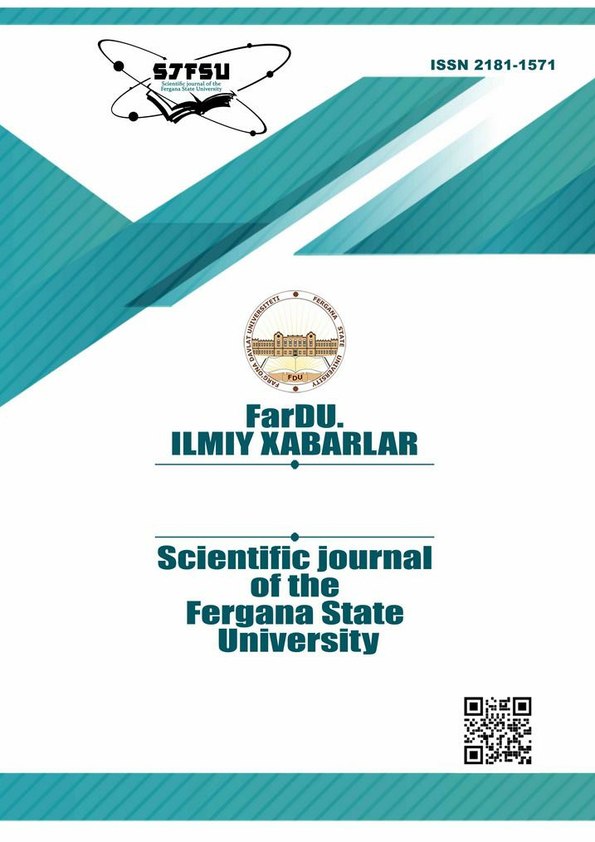TEACHING UNDERGRADUATE STUDENTS CLINICAL VOCABULARY
Main Article Content
Abstract
The purpose of the study, described in the article, was to implement and evaluate a method for teaching undergraduate student to use clinician vocabulary instruction during shared patient’s cards reading. Undergraduate students enrolled in after semester 2 weeks practicum participated in the study. Prerecorded teaching modules may be an efficient, effective way to teach specific empirically supported practice to undergraduate student with clinic vocabulary. Future studies can examine the potential of these types of teaching modules for other outcomes or with groups of practicing clinic vocabulary.
Article Details

This work is licensed under a Creative Commons Attribution-NonCommercial-NoDerivatives 4.0 International License.
References
Buranova D.D. “To teach or not to teach English for medical students” Psychology and education(2021) 58(3), p.907 (//Учить или не учить английскому языку медицинских сутдентов// Tibbiyot talabalari uchun ingliz tilini o‘rgatish yoki o‘rgatmaslik)
Golinkoff, R. M., De Villiers, J. G., Hirsh-Pasek, K., Iglesias, A.,Wilson, M. S., Morini, G., &Brezack, N. (2017). User’s manual for the Quick Interactive Language Screener (QUILS): A measure of vocabulary, syntax, and language acquisition skills in young children. Brookes.(// Измерение словарного запаса, синтаксиса и навыков владения языком у детей младшего возраста// Yosh bolalarda lug‘at, sintaksis va tilni o‘zlashtirish ko‘nikmalarining o‘lchovi)
Gordon, K. R. (2020). The advantages of retrieval-based and spaced practice: Implications for word learning in clinical and educational contexts. Language, Speech, and Hearing Services in Schools, 51(4), 1–11. https://doi.org/10.1044/2020_LSHSS-19i-00001 (//Преимущества практики, основанной на извлечении информации, и интервальной практики: Последствия для изучения слов в клинических и образовательных контекстах// Qidiruvga asoslangan va intervalgacha amaliyotning afzalliklari: Klinik va ta'lim kontekstida so‘zlarni o‘rganishga ta'siri)
Johnson, G., Gersten, R., &Carnine, D. (1987). Effects of instructional design variables on vocabulary acquisition of LD students: A study of computer-assisted instruction. Journal of Learning Disabilities, 20(4), 206–213. (//Влияние переменных учебного дизайна на усвоение лексики студентами c языковым барьером// Til to‘sig‘i talabalrning so‘z boyligini o‘zlashtirishga o‘quv dizayni o‘zgaruvchilar ta'sir)
Maslova A.M. Guide book of English language for medical high schools, M.2018(//Справочник по английскому языку для медицинских вузов// Tibbiyot oliy
ta'lim muassasasilari uchun ingliz tili bo‘yicha qo‘llanma)
Maynard, K. L., Pullen, P. C., & Coyne, M. D. (2010). Teaching vocabulary to first-grade students through repeated shared storybook reading: A comparison of rich and basic instruction to incidental exposure. Literacy Research and Instruction, 49(3), 209–242. https://doi.org/10.1080/19388070902943245 (//Обучение лексике первокурсников через многократное совместное чтение рассказов// Birinchi kurs talabalariga hikoyalar kitobini takroriy o‘qish orqali lug‘atni o‘rgatish)
McGregor, K. K., & Duff, D. (2015). Promoting diverse and deep vocabulary development. In T. Ukrainetz (Ed.), School-age language intervention: Evidence-based practices (pp. 247–278). Pro-Ed. (//Содействие развитию разнообразного и глубокого словарного запаса// Turli va chuqur so‘z boyligini rivojlantirishga yordam berish)
Nowicki, B. L., Sullivan-Watts, B., Shim, M. K., Young, B., &Pockalny, R. (2013). Factors influencing science content accuracy in elementary inquiry science lessons. Research in Science Education, 43(3), 1135–1154. https://doi.org/10.1007/s11165- 012-9303-4 (//Факторы, влияющие на точность научного содержания на уроках начальной школы/ Boshlang‘ich so‘rov tabiatshunoslik darslarida fan mazmunining aniqligiga ta'sir qiluvchi omillar)
Perona, K., Plante, E., & Adam, R. (2005). Diagnostic accuracy of the Structured Photographic Expressive Language Test–Third Edition(SPELT-3). Language, Speech, and Hearing Services in Schools,36(2), 103–115. https://doi.org/10.1044/0161-1461(2005/010) (//Диагностическая точность структурированного фотографического теста экспрессивного языка// Strukturaviy fotografik ekspressiv til testining diagnostik aniqligi)
Sharipova F.I. “Learn and work” Study book for the 1st course students. T., 2022 (//Учись и работай//O‘qi va ishla)
Steele, S. C. (2020). Vocabulary intervention: A national survey of school-based speech language pathologists. Communication Disorders Quarterly, 41(3), 151–161. https://doi.org/10.1177/ 1525740119827008 (//Словарное вмешательство// Lug‘atga aralashuv)
Young, B. J., & Lee, S. K. (2005). The effects of a kit-based science curriculum and intensive science professional development on elementary student science achievement. Journal of Science Education and Technology, 14(5–6), 471–481. https://doi.org/10.1007/s10956-005-0222-2 (// Влияние учебной программы по естественным наукам на основе комплектов и интенсивного профессионального развития в области естественных наук на успеваемость студентов первых курсов по естественным наукам// To‘plamga asoslangan fan o‘quv dasturi va intensiv fan kasbiy rivojlanishining boshlang‘ich kurs talabalarning fan yutuqlariga ta'siri)
Williams, K. T. (2007). Expressive Vocabulary Test–Second Edition. Pearson. https://doi.org/10.1037/t15094-000 (//Тест по экспрессивной лексике// Ekspressiv lug‘at testi)

